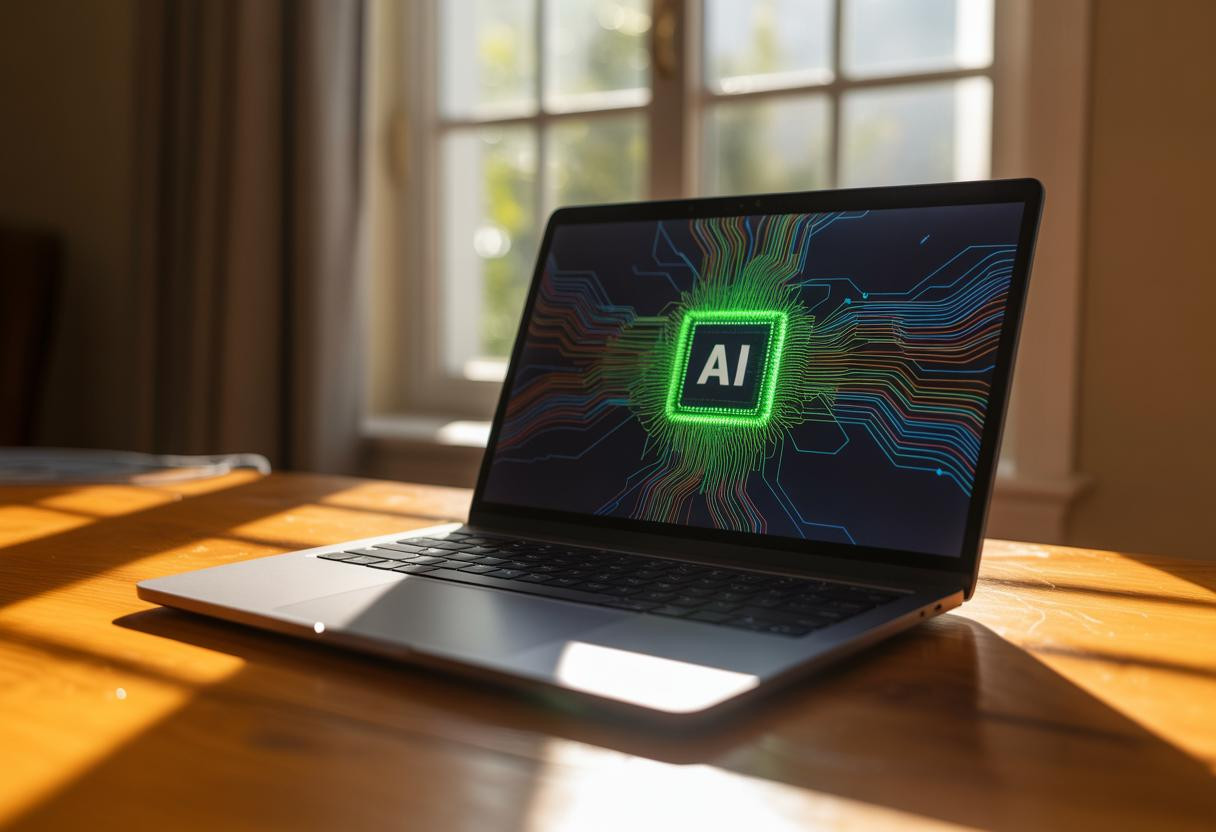AMD’s latest processor just shattered industry benchmarks by delivering 12.2x faster performance in large language model tasks compared to Intel’s flagship chip, fundamentally changing what’s possible in portable AI computing. This isn’t just an incremental upgrade—it’s a complete reimagining of how processors handle artificial intelligence workloads.
The revolutionary architecture behind this breakthrough
The Ryzen AI Max series represents a paradigm shift by combining three distinct processing units into one unified powerhouse. Unlike traditional setups where CPU, GPU, and AI accelerator compete for resources, AMD’s design features 16 Zen 5 CPU cores, 40 RDNA 3.5 GPU compute units, and a 50 TOPS XDNA 2 NPU all sharing access to an unprecedented 128GB of unified memory.
This architectural breakthrough eliminates the memory bottlenecks that have plagued AI computing for years. While Nvidia’s $1,999 graphics card with 92 billion transistors is reshaping an entire industry, AMD’s approach delivers similar AI performance without requiring discrete graphics cards or their hefty price tags.
The unified memory architecture means 14-billion parameter language models can run entirely without splitting, something impossible on systems with traditional memory constraints. This represents a fundamental shift from discrete component computing to truly integrated AI processing.
Performance numbers that redefine expectations
Benchmarks reveal stunning advantages
Real-world testing shows the Ryzen AI Max+ 395 delivers 4x faster performance on 3-billion parameter models and scales dramatically with larger models. The 12.2x advantage on 14-billion parameter models isn’t just marketing—it reflects the processor’s ability to handle massive AI workloads that would choke competing systems.
In practical terms, tasks that previously required several minutes now complete in seconds. DeepSeek R1 benchmarks demonstrated 3x faster performance than discrete graphics solutions, while maintaining the portability and power efficiency of laptop form factors.
What this means for everyday users
Beyond raw numbers, this performance translates to revolutionary capabilities. Professionals can now run sophisticated AI models locally for sensitive data analysis, eliminating cloud dependencies and privacy concerns. Content creators gain access to AI-assisted video editing and code generation previously reserved for high-end workstations.
The processor’s 126 TOPS of combined compute power enables real-time AI applications that seemed impossible in portable devices just months ago.
Market implications and competitive landscape
AMD’s aggressive positioning challenges both Intel’s mobile workstation dominance and NVIDIA’s discrete GPU market share. The company strategically targets thin-and-light workstations and high-end consumer laptops, areas where integrated solutions offer significant advantages over bulky discrete components.
Industry analysts predict this could trigger a broader shift toward integrated AI accelerators, similar to how Nvidia transformed a $4.5 billion trade war hit into 69% revenue growth by pivoting to AI-focused hardware. Intel’s response with enhanced NPU capabilities seems inevitable.
Real applications transforming industries
Healthcare professionals are already leveraging these processors for real-time medical image analysis in portable diagnostic equipment. Engineers use them for AI-accelerated simulations that previously required dedicated workstations, while researchers benefit from running custom language models without cloud dependencies.
For creative professionals, the unified architecture enables AI-assisted workflows that reduce complexity while maintaining creative control—addressing the stress and inefficiency that many face when juggling multiple specialized tools.
Technical limitations and future considerations
Despite impressive capabilities, thermal constraints present challenges. The 120W TDP requirement pushes laptop cooling systems to their limits, potentially affecting sustained performance. Like advances in battery technology that eliminate fire risks, future iterations will likely focus on power efficiency improvements.
Software optimization remains crucial—applications must be specifically designed to leverage the unified architecture’s advantages. Without proper optimization, users won’t experience the full performance benefits AMD promises.
The future of integrated AI computing
This processor signals the beginning of a new era where AI acceleration becomes as standard as graphics processing in consumer devices. The 128GB unified memory approach may become the template for future designs, forcing competitors to rethink traditional architectures. AMD’s bold integration strategy suggests we’re moving toward a world where powerful AI capabilities are simply expected in every computing device.
